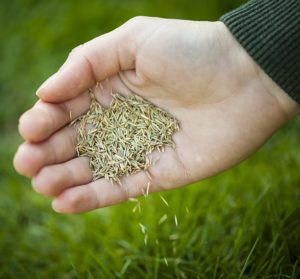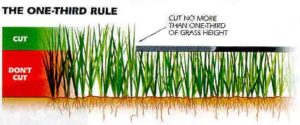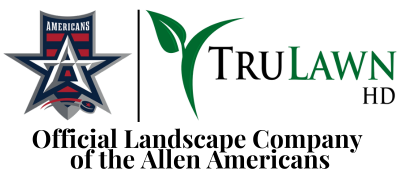Overseeding Your Lawn with Winter Rye
We’re coming up on Autumn/Fall, though I know it doesn’t feel like it, soon it will be time to plan for your winter lawn. The best time to plant your winter grass seed is typically the first two weeks of October, when the Evening temperature drops down to 65 degrees and stays there, and the day time temps stay below 85 degrees. The process over converting your yard is called overseeding which requires you to cut down your Bermuda grass and seed over it with Rye grass. If this is something that you plan on doing on your own, here are some brief instructions to help you through the 6 steps of growing and maintaining a beautiful winter lawn.
- Scalping ( cutting yard "VERY" low and removing all dead clippings)
- Overseeding
- Fertilizing
- Watering (heavily to get good germination)
- Mowing (weekly through winter)
- Feeding
Scalping
Scalping your lawn means cutting your grass down to between 1/2 an inch and 3/4 of an inch. Removing all grass clippings to expose soil. After mowing, you should see a network of runners spreading across the soil. A Typical Bermuda yard in North Texas (3500 sgft) can yield on average 10-30 large bags of clippings (based on height of grass). Wait did you say 10- 30 bags of clippings? We sure did. Sounds like to much work? We can Help here at TruLawn HD
Overseeding
When you go to buy your grass seed, you’ll see a variety of seed, primarily ryegrass, that’s the one you’ll need, perennial ryegrass. Higher quality will mean a greener lawn, so choose carefully. We’ll assume that you have 1,000 square feet of soil to be seeded, though it’s unlikely. If you want an average length of ½ to 1 inch, you’ll need 15 pounds of seed. If you want an average length of 1 to 2 inches the leaves will need a little more room to grow, you’ll need only 12 pounds of seed. You’ll need to get a spreader and go back and forth across the lawn in both directions, crosshatching the lawn. Use half of your seed in one direction, then use the other half in the other direction. Crisscrossing will ensure that your lawn doesn’t look patchy, take your time and it’ll come out nicely.
Fertilizing
Fertilizers are not all the same, they come in different blends for different types of grass, different seasons and different growing conditions. It’s important to use the right fertilizer for the seeds you’ll be planting. If you have leftover fertilizer from your bermudagrass, don’t use it on your ryegrass. Ryegrass needs its own starter fertilizer with low nitrogen, high phosphorus and high potassium levels, like 6-20-20.
Watering
In Texas, watering correctly is difficult. If you water once a day the seeds will die. If you water the seeds thoroughly, so that there is standing water or irrigation, the seeds will die, even frequent watering can fail if it doesn’t go on long. The correct way to water your seeds is to water with sprinklers 3 to 5 times per day for 6 to 10 days, or until the sprouts are an inch tall. The sprinklers don’t need to run long, about 5 to 15 minutes each time, enough to moisten the soil, little enough that it will either be absorbed or evaporate before the next watering. After your grass is an inch long you may reduce watering to 2-3 times per day for another week, then once a day until your lawn has grown in. After the grass is established you can water once, every other day to until spring, then every night.
Mowing
Your rye grass will be young and delicate, you don’t want to cut too much off. Your first mowing should take it down to about an inch, your second mowing shouldn’t happen for 2-3 weeks. Mowing your grass before fertilizing will encourage your lawn to “spread”, stalks will send out lateral branches growing out to the sides, providing better ground cover.
Feeding
Grass needs to be fed regularly, your winter rye grass should be fed with a high nitrogen growth fertilizer. Unlike the starter fertilizer you used for the initial growth of your ryegrass seeds, which was low in nitrogen and high in both phosphorus and potassium, maintaining your lawn will require a nitrogen only fertilizer, like 34-0-0.
Growth fertilizer should be applied 2 weeks after planting, even if it hasn’t been mowed yet.
Fertilize with nitrogen in another 4 weeks, then again 4 weeks after that.
Weed Control--- Bonus info ---
Your Rye grass may develop some weeds but be very careful that you use only products labeled for rye grass.
Good luck with your new lawn, I’m sure it will be beautiful. Ryegrass is a little higher maintenance than your summer bermudagrass, but it’ll be worth it. Just remember, with the change in growing season, there will be different weeds growing in your area, if you need help keeping them out of your new lawn, give us a call.


